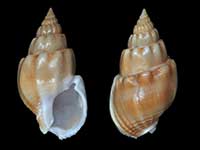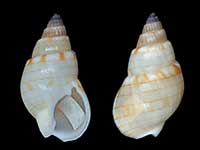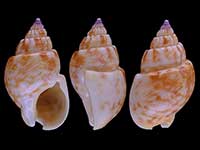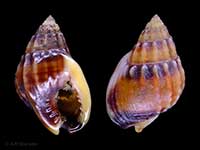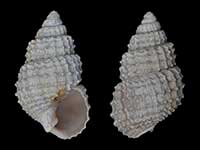Mollusca (Phylum) > Gastropoda (Class) > Caenogastropoda (Subclass) > Neogastropoda (Order) > Buccinoidea (Superfamily) > Nassariidae (Family) > Nassariinae (Subfamily)
 Filter region:
Filter region: 
(greyed out images not recorded from filtered region)
 Click here to filter list on Geographical Range
Click here to filter list on Geographical RangeSubfamily: Nassariinae
- Nassarius aoteanus Finlay, 1926
Height 36mm, Width 20mm
Marine, Native - Endemic
Northland east coast, from North Cape to East Cape, 2-113 metres
A - Nassarius glans particeps (Hedley, 1915)
Height 28mm, Width 13mm
Marine
Northland east coast Cavalli Islands. Also New South Wales, Australia. Subtidal to approximately 77 metres, in sand
A - Nassarius himeroessa (Melvill & Standen, 1903)
Height 6.4mm
Marine
Off Raoul Island, Kermadec Islands
K - Nassarius nodiferus (Powys, 1835)
Height 23mm
Marine
From Mauritius to China, the New Hebrides, and Kermadec Islands
K - Nassarius spiratus (A. Adams, 1852)
Height 25mm, Width 14mm
Marine, Native - Non-endemic
Northland east coast. From low tide to over 20 metres. Also NSW Australia, and Lord Howe Island
KA - Tritia burchardi (Dunker, 1849)
Width 17mm, Height 13mm
Marine, Native - Non-endemic
Eastern and southern Australia and northern New Zealand
A - Tritia ephamilla (R.B. Watson, 1882)
Height 22mm, Width 12mm
Marine
North, South and Chatham Islands. Trawled from 400 to 1800 metres. Also New South Wales along the eastern coast of Australia to Victoria, South Australia and Tasmania
KACFM
Key to Geographical Ranges
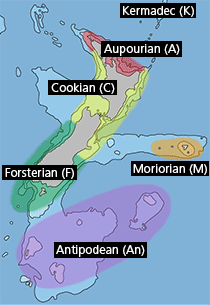
The symbols K.A.C.F.M.An. are used to indicate the geographical range of the species.
They have been adopted to give an approximation of the range of each species within New Zealand.
K=
Kermadec Islands
A=
Aupourian - Kaipara Harbour, north around North Cape, encompassing the Three Kings Islands and south to East Cape
C=
Cookian - Lower North Island and the northern part of the South Island
F=
Forsterian - Otago, Fiordland and Stewart Island
M=
Moriorian - Chatham Islands, Pitt Island
An=
Antipodean - Subantarctic Islands of New Zealand
Fw =
Freshwater
L =
Land
N =
North Island
S =
South Island
R =
Recent
Sf =
Subfossil
Fo =
Fossil
